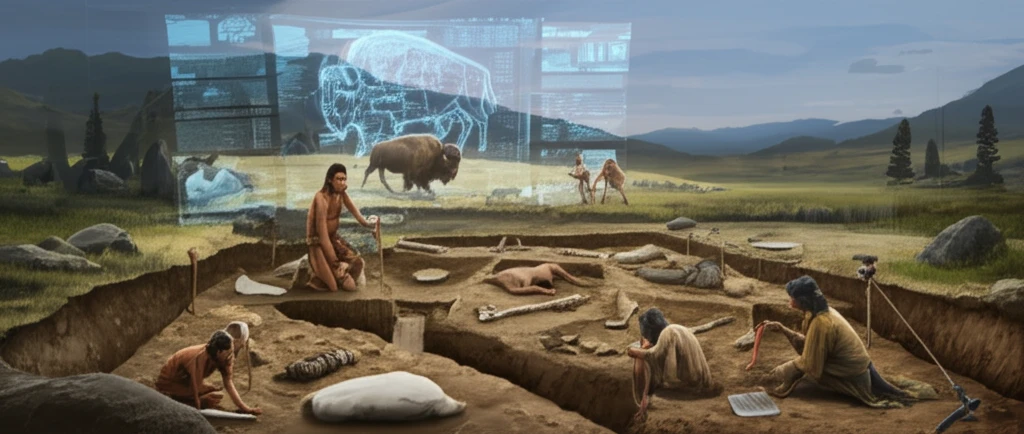
Unearthing the Past: What Archaeological Discoveries Reveal About Early Americans and Their World
"A deep dive into recent archaeological research sheds light on the lives, diets, and environments of early American hunter-gatherers."
Archaeological research is constantly rewriting the story of early human life in North America. Through careful excavation, analysis of artifacts, and environmental reconstruction, archaeologists are piecing together a picture of the people who first inhabited this continent, their adaptations to changing climates, and their interactions with the landscape.
A wealth of knowledge has been gleaned by recognizing the achievements of distinguished mentors and colleagues. Annual SAA meetings often become the venue in which archeologists recognize their mentors and their accomplishments. An example of this, the 2012 SAA session organized to honor the work of Vance Haynes and George Frison.
These studies often focus on understanding the environments in which these early people lived, considering climate change, available resources, and the distribution of megafauna. By analyzing the bones of bison and other animals, researchers gain insights into hunting practices, dietary habits, and the overall relationship between humans and their prey.
Pre-Clovis Debate: Were We Wrong About the First Americans?

For decades, the Clovis culture, characterized by distinctive fluted spear points, was considered the earliest widespread archaeological culture in North America. However, in recent years, growing evidence has challenged this long-held view. Sites like Meadowcroft Rockshelter in Pennsylvania and Monte Verde in Chile have yielded artifacts dating back thousands of years before the Clovis period, sparking a heated debate about the timing and routes of the first migrations into the Americas.
- Meadowcroft Rockshelter, Pennsylvania: This site has been the subject of intense scrutiny, with some researchers claiming evidence of human occupation dating back as far as 16,000 years ago.
- Monte Verde, Chile: Located in southern Chile, Monte Verde has yielded well-preserved artifacts, including wooden tools and plant remains, dating back to approximately 14,500 years ago.
- Paisley Caves, Oregon: These caves contain evidence of human occupation dating back over 14,000 years, including human coprolites (fossilized feces) containing pre-Clovis DNA.
Honoring Legacies: The Enduring Impact of Archaeological Pioneers
The research into these topics seek to honor the contributions of Haynes and Frison, with personal gratitude and admiration for these men. The contributions to this volume, knowing and learning from Vance and George for many years has been a valuable pleasure. The ongoing discoveries and debates highlight the dynamic nature of archaeological research. As new evidence emerges and analytical techniques advance, our understanding of early American history continues to evolve, offering fresh perspectives on the lives and adaptations of the continent's first inhabitants.
